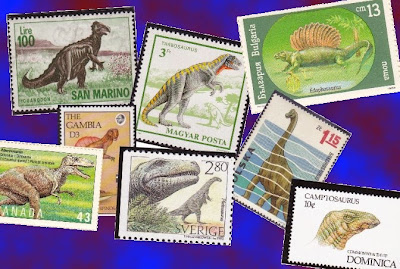Fossils in Strange Places Unsettling to Darwinists
A spell back, I was in town and came across an acquaintance of mine, Ruby Slippers. She wanted to know some things about fossils that do not fit the expectations of believers in particles-to-paleontologist evolution. There were two things I had been reading that I discussed with her, and through time, chance, random processes but not by design, they happen to be here for y'all.
Although creation deniers on teh interwebs pretend that there are no fossils in unexpected layers, but they seem to be uninformed. In many cases, there are fundamentalist evolutionists who lie to us about the fossil record. One of many possible examples is the jumble of bones in Dinosaur Monument. Paleontologists and geologists get clues about habitats and the critters that occupied them.
Still, it was a mite surprising to find fossilized frogs in Antarctica. Dating methods and guesswork to evosplain their timing and placement leave me cold. What could frogs have been doing there before they croaked? Global warming, maybe. Well...
Actually, this next piece is only puzzling to those who are shackled to deep time and naturalism. If you and your gang mount up and ride down Africa way (careful crossing bodies of water and such), you might want to check out the Kem Kem layers. There are jumbled dinosaur fossils that give naturalists the impression that because there were so many dangerous critters there (and other things as well), it must have been the Chicago of dinosaur times.
No, the secularists' rescuing devices fail to explain what was observed. Evidence shows recent creation and a global catastrophe. If someone has the courage to compare the observed evidence with a creation science Genesis Flood model, things make a heap more sense.
Although creation deniers on teh interwebs pretend that there are no fossils in unexpected layers, but they seem to be uninformed. In many cases, there are fundamentalist evolutionists who lie to us about the fossil record. One of many possible examples is the jumble of bones in Dinosaur Monument. Paleontologists and geologists get clues about habitats and the critters that occupied them.
Still, it was a mite surprising to find fossilized frogs in Antarctica. Dating methods and guesswork to evosplain their timing and placement leave me cold. What could frogs have been doing there before they croaked? Global warming, maybe. Well...
To read the rest of this first one, click on "Frog Fossils Found in Antarctica!" Then we have another bit of news about confusing fossils.Can you imagine frogs in snow-covered, frigid Antarctica? A recent fossil discovery has significant implications for Earth’s climate history as well as the fossil record.In April a Swedish paleontologist, Dr. Thomas Mörs of Stockholm’s Naturhistorika Riksmuseet (Royal Museum of Natural History), published the first report of fossilized frog bones ever found in Antarctica. He reported finding “a fossil ilium,” which is an outer pelvic bone, and “an ornamented skull bone” from a family of frogs called “helmeted frogs,” typically found in South America. Along with these fossils, the team found water lily seeds, shark teeth, and ray teeth.
Actually, this next piece is only puzzling to those who are shackled to deep time and naturalism. If you and your gang mount up and ride down Africa way (careful crossing bodies of water and such), you might want to check out the Kem Kem layers. There are jumbled dinosaur fossils that give naturalists the impression that because there were so many dangerous critters there (and other things as well), it must have been the Chicago of dinosaur times.
No, the secularists' rescuing devices fail to explain what was observed. Evidence shows recent creation and a global catastrophe. If someone has the courage to compare the observed evidence with a creation science Genesis Flood model, things make a heap more sense.
You can read the full article by clicking on "Massive Cache of Dangerous Carnivores Found".Recently, a new study published in the journal ZooKeys has claimed to have found the most dangerous location to live in Earth’s history. And it is possible they are entirely correct, but for the wrong reasons.. . .Oddly, the scientists found that there seemed to be an abundance of large theropod (meat-eating) dinosaurs in the Kem Kem, too many to be easily explained. The study authors described:
